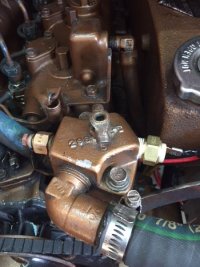vincentshine
Member I
Seems like this is something that someone has asked before. Let me know if that is the case.
I would like to install a high temp alarm on my 1985 Universal M-18. The only one I have found is on Catalina Direct. While fine boats, mine is a 1985 Ericson 30+. I spoke to the sells department at Catalina direct. This is NOT returnable if purchased for boats that ARE NOT Catalinas.
Does anyone have experience with this retrofit kit? If not, does anyone have a different suggestion? https://www.catalinadirect.com/inde...temp-alarm-retrofit-m-18-m-25-m-25xp-m-35.cfm
It looks like a fit but rather avoid a Ebay resell.
Thanks!
Vincent
I would like to install a high temp alarm on my 1985 Universal M-18. The only one I have found is on Catalina Direct. While fine boats, mine is a 1985 Ericson 30+. I spoke to the sells department at Catalina direct. This is NOT returnable if purchased for boats that ARE NOT Catalinas.
Does anyone have experience with this retrofit kit? If not, does anyone have a different suggestion? https://www.catalinadirect.com/inde...temp-alarm-retrofit-m-18-m-25-m-25xp-m-35.cfm
It looks like a fit but rather avoid a Ebay resell.
Thanks!
Vincent

